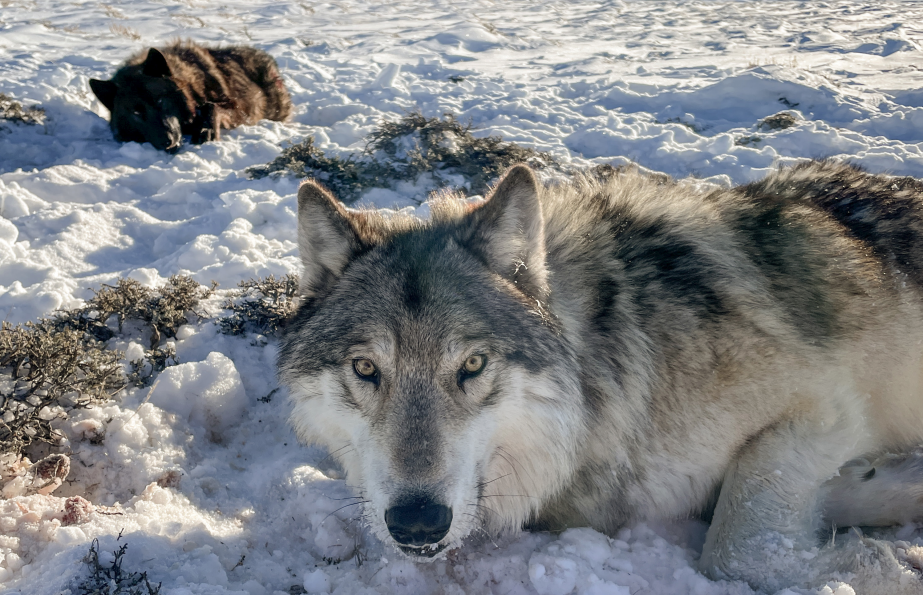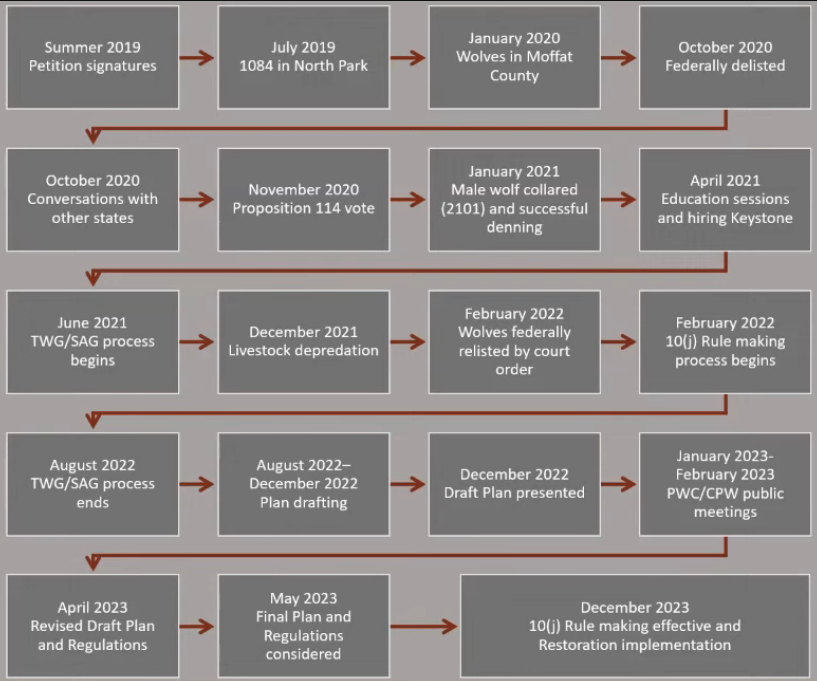DENVER — The U.S. Fish and Wildlife Service announced Tuesday morning that it has finalized the designation of an experimental population of gray wolves in Colorado under section 10(j) of the federal Endangered Species Act (ESA).
This was the expected next step as the state prepares to reintroduce gray wolves before the end of the year.
Section 10(j) in the ESA allows the federal government to designate a population of a listed species — like gray wolves — as experimental if they are set to be released into natural habitat outside their current range, like Colorado in this case. If a 10(j) rule is adopted, the state wildlife organization gains management flexibility for the animal. For Colorado, this could include management tools like aversive conditioning and lethal take to protect people and livestock, especially following reintroduction.
Many members of the public, as well as elected officials, previously said they feel that this rule needed to be adopted before Colorado reintroduced any wolves to the land.
The 10(j) rule will be formally published in the Federal Register on Wednesday and will become effective on Dec. 8, 2023, according to the USFWS.
Colorado Parks and Wildlife's Reid DeWalt, who is the assistant director for the Aquatic, Terrestrial, and Natural Resources branch, said the team is still examining possible release locations in Colorado, though they are leaning toward the northern circle as shown below in the final plan. The wolves will likely be released in 10 different locations within that perimeter. This will happen no later than Dec. 31, 2023.

CPW anticipates that they will migrate to new areas over time, which may include the Front Range.
CPW announced in early October that it had secured its first round of gray wolves for reintroduction into the Western Slope from Oregon. The wolves will be captured and moved between December 2023 and March 2024. The agreement between CPW and the Oregon Department of Fish and Wildlife (ODFW) is good for one year. The wolves will come from northwest Oregon, where they are most abundant in the state, and where their removal will not impact any conservation goals, said ODFW Director Curt Melcher.
All released wolves will have satellite GPS collars.
As of the latest CPW Commission update from late August, officials were working to secure a helicopter for captures, work with companies that would fly wolves to Colorado immediately after capture, go through legal avenues to use tranquilizer drugs, build proper crates, hire new employees for wolf-specific roles and more.
DeWalt also said that an administrative directive on the management of wolves — focused on solving conflicts with them — will be in place before the animals are released. This is the case with most predator species in the state, he said. CPW is building up its supply of items for preventative measures and continuing educational outreach.
Gray wolves are currently classified as an endangered species by the State of Colorado. They are native to Colorado, but were exterminated and functionally extinct by the 1940s. About 6,000 of the animals now live in the Northern Rockies, Pacific Northwest and Western Great Lakes after the federal government reintroduced the wolves in Yellowstone National Park in the mid-1990s.
In the summer of 2019, the Rocky Mountain Wolf Action Project began circulating petitions asking voters to put a question on the 2020 ballot asking if wolves should be reintroduced. This went on to become Proposition 114. In the November 2020 state election, voters chose to pass Proposition 114, which mandated that CPW develop a plan to start reintroducing and managing gray wolves in western Colorado and to take steps to begin reintroductions by Dec. 31, 2023.

Local
CPW Commission approves final Wolf Restoration and Management Plan
In its wake, CPW worked with the public and experts to develop the Colorado Wolf Restoration and Management Plan. The final version of that plan was released in May.
CPW said its primary goal with this plan is "to recover and maintain a viable, self-sustaining wolf population in Colorado, while concurrently working to minimize wolf-related conflicts with domestic animals, other wildlife, and people."

To learn more about Colorado's gray wolf reintroduction plan, click here.





